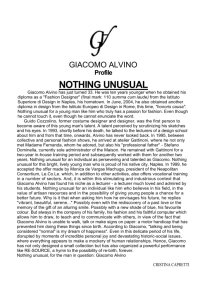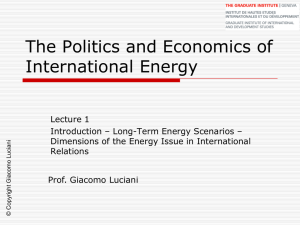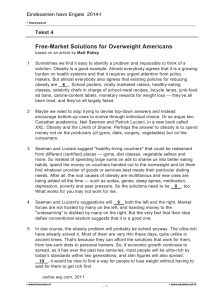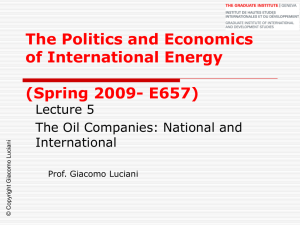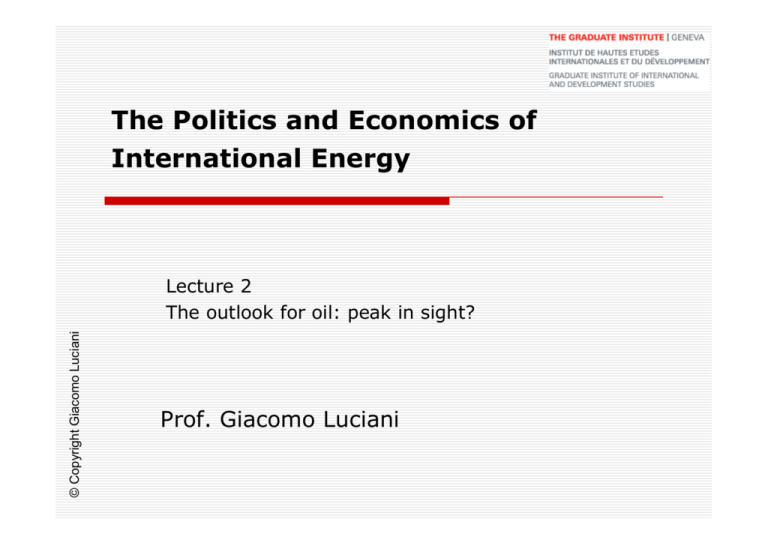
The Politics and Economics of
International Energy
© Copyright Giacomo Luciani
Lecture 2
The outlook for oil: peak in sight?
Prof. Giacomo Luciani
© Copyright Giacomo Luciani
© Copyright Giacomo Luciani
Oil Proven Reserves at end 2008
1%
1%
Saudi Arabia
Iran
1%
1%
8%
Iraq
Kuwait
21%
2%
Venezuela
United Arab Emirates
2%
2%
Russian Federation
© Copyright Giacomo Luciani
3%
Libya
Kazakhstan
3%
11%
3%
Nigeria
US
Canada
Qatar
6%
9%
8%
8%
8%
China
Angola
Brazil
Algeria
Other
© Copyright Giacomo Luciani
© Copyright Giacomo Luciani
© Copyright Giacomo Luciani
© Copyright Giacomo Luciani
© Copyright Giacomo Luciani
© Copyright Giacomo Luciani
Changing expectations
© Copyright Giacomo Luciani
IEO 2008 edition
IEO 2009 edition
© Copyright Giacomo Luciani
© Copyright Giacomo Luciani
© Copyright Giacomo Luciani
Source: OPEC World Oil Outlook 2009
© Copyright Giacomo Luciani
Source: OPEC World Oil Outlook 2008
© Copyright Giacomo Luciani
Source: OPEC World Oil Outlook 2008
© Copyright Giacomo Luciani
© Copyright Giacomo Luciani
Reserves
Reserves are those quantities of petroleum
which are anticipated to be commercially
recovered from known accumulations from a
given date forward.
All reserve estimates involve some degree
of uncertainty.
Classification according to the relative
degree of uncertainty:
Proved reserves
Unproved reserves
Probable reserves
Possible reserves
Source: Society of Petroleum Engineers (SPE) Inc., 2000
© Copyright Giacomo Luciani
Proved reserves (P90)
Quantities of petroleum which, by analysis
of geological and engineering data, can be
estimated with reasonable certainty (90%
probability) to be commercially
recoverable…
Recoverable:
From a given date forward,
From known reservoirs, and
Under current economic conditions, operating
methods, and government regulations.
Proved reserves can be categorized as:
Developed, or
Undeveloped.
Source: Society of Petroleum Engineers (SPE) Inc., 2000
© Copyright Giacomo Luciani
Unproved reserves
Based on geologic and/or engineering data
similar to that used in estimates of proved
reserves;
But technical, contractual, economic, or
regulatory uncertainties preclude such
reserves being classified as proved.
Unproved reserves may be further classified
as:
Probable reserves, and
Possible reserves.
Source: Society of Petroleum Engineers (SPE) Inc., 2000
© Copyright Giacomo Luciani
Probable reserves (P50)
Unproved reserves which analysis of
geological and engineering data
suggests are more likely than not to
be recoverable.
There should be at least a 50%
probability that:
the quantities actually recovered will be ≥
estimated proved reserves + probable
reserves.
© Copyright Giacomo Luciani
Possible reserves (P10)
Unproved reserves which analysis of
geological and engineering data
suggests are less likely to be
recoverable than probable reserves.
There should be at least a 10%
probability that:
the quantities actually recovered will be ≥
estimated proved + probable + possible
reserves.
Source: Society of Petroleum Engineers (SPE) Inc., 2000
© Copyright Giacomo Luciani
Speculative or
Undiscovered Resources
Estimates of petroleum that might
exist in a basin based on
extrapolation of data on discovered
resources, exploration intensity,
number of wells drilled etc.
Based on geological knowledge, but
no two basins are the same…
Definition
Definitions most commonly used:
• Resources / In-Place Hydrocarbons
• Reserves (original recoverable):
• Proven – SEC reserves
• Probable – P+P – 2P
• Possible – 3P
• Definitions based on:
• Geological Knowledge
• Field project Status and Feasibility
• Economic and commercial viability
Copyright © 2008 IHS Inc. All Rights Reserved.
SPE/WPC/AAPG
Other definitions
• Russian systems requires translation into SPE/WPC/AAPG system
• UNFC (UN Framework Classification)
Copyright © 2008 IHS Inc. All Rights Reserved.
© Copyright Giacomo Luciani
Reserves estimates
Reserves estimates will generally be revised
as additional geologic or engineering data
becomes available or as economic conditions
change.
Reserves do not include quantities of
petroleum being held in inventory, and may
be reduced for usage or processing losses if
required for financial reporting.
Reserves may be produced thanks to either
natural energy or improved recovery
methods.
© Copyright Giacomo Luciani
Deterministic vs. Probabilistic
Deterministic approach:
The method of estimation is called deterministic if a
single best estimate of reserves is made based on
known geological, engineering, and economic data.
Probabilistic approach:
The method of estimation is called probabilistic when
the known geological, engineering, and economic data
are used to generate a range of estimates and their
associated probabilities.
Because of potential differences in uncertainty,
caution should be exercised when aggregating
reserves of different classifications.
Source: Society of Petroleum Engineers (SPE) Inc., 2000
© Copyright Giacomo Luciani
The Malthusian view
The Malthusian view is based on
bottom-up analysis of all sedimentary
basins and known fields, leading to an
estimate of total global reserves
(possible).
Conclusion: global oil production will
peak within 2020 (some say:2005),
then gently decline.
Oil demand is expected to increase
monotonously
© Copyright Giacomo Luciani
Hubbert and his curve
Peak Oil?
• What is the story behind peak oil?
Copyright © 2008 IHS Inc. All Rights Reserved.
Recoverable Conventional Liquids & Natural Gas Resources
Discovery Trends
Total Discovered Resources to End-2007 versus Number of Discoveries
600,000
3,000
North Field / South Pars
500,000
2,500
Liquids
Urengoy
Number of Discoveries
Marun
400,000
2,000
Ahwaz
Astrakhan
300,000
Ghawar
Burgan
200,000
1,500
1,000
Kashagan
Gachsaran
100,000
D iscoveries in Period
M illion B arrels O il Equivalent
Gas
500
(excludes USA and Canada)
(excludes USA and Canada)
7
-0
5
06
-0
20
01
20
00
0
5
-2
-9
0
91
-9
5
86
-8
0
81
-8
5
76
96
Copyright © 2008 IHS Inc. All Rights Reserved.
-7
0
-7
71
66
61
-6
5
0
5
-6
56
-5
0
51
-5
5
46
-4
0
41
-4
5
-3
36
31
-3
0
5
26
-2
0
21
-2
5
16
-1
0
11
-1
-0
06
01
19
Pr
e-
5
0
01
0
31
World Liquids Resources
The Key Issue
Annual Liquids Discovered versus Annual Liquids Production
Annual Recoverable Resource Additions
100,000
5-Year Moving Average Annual Resource Additions
Annual Liquids Production
Million Barrels
80,000
60,000
40,000
20,000
05
20
00
20
95
19
90
19
85
19
80
19
75
19
70
19
65
19
19
60
0
Copyright © 2008 IHS Inc. All Rights Reserved.
32
© Copyright Giacomo Luciani
Is oil produced or found?
Adelman claims that oil is produced, and
that only when the marginal cost of
producing new crude will start rising we
may worry about exhaustion of oil
reserves.
Oil reserves have always been
underestimated, the marginal cost of
producing new oil is constantly falling.
The Malthusian view is a fallacy.
Upstream Technology
© Copyright Giacomo Luciani
Upstream technology has made enormous
strides and considerably reduced finding and
development costs.
Most important progress:
In exploration (satellite images, interpretation of
seismic data)
In production (horizontal drilling, multilateral
wells, intelligent wells, deep offshore)
In reservoir management
© Copyright Giacomo Luciani
© Copyright Giacomo Luciani
Saudi Aramco MRC Record
• Fishbone Multilateral
Well
n
ai
M
L-3
W
L-2
l
el
L-5
MRC Well
L-7
L-4
Total Footage
Drilled = 46,614 ft
Total Reservoir
Contact = 12.3 km
L-6
L-8
0
500
Scale: meters
1000
re
o
b
L-1
MRC Cost
MRC
Reservoir Contact ≥ 5 Km
© Copyright Giacomo Luciani
© Copyright Giacomo Luciani
More recovery from reservoirs
Given the current proven reserves base, a 1% increase in the
average recovery rate would add 1 year extra oil production
Source: IEA, World Energy Outlook 2005
World liquid resources
• Total 2.4 trillion barrels discovered, 1.24 trillion remaining
Copyright © 2008 IHS Inc. All Rights Reserved.
© Copyright Giacomo Luciani
© Copyright Giacomo Luciani
© Copyright Giacomo Luciani
The challenge our industry is facing
• Downward trend in discoveries
• Problem: large fields more difficult to find
2500
Discoveries
50
2000
40
Wildcats
1500
30
1000
20
500
10
0
1910
Number of widlcats drilled
Number of Large discoveries (>250 MMboe)
60
0
1920
1930
1940
1950
1960
Move
offshore
Copyright © 2008 IHS Inc. All Rights Reserved.
1970
1980
1990
3D seismic
2000
Deepwater South
Atlantic successes
Reserves Growth
• Growth of existing reserves in Giant fields is important in replacing
production
Copyright © 2008 IHS Inc. All Rights Reserved.
Impact of new technology
• New production technology improves recovery
Copyright © 2008 IHS Inc. All Rights Reserved.
Unconventional Resources
Definition
© Copyright Giacomo Luciani
The boundaries between “conventional” and “unconventional”
fossil hydrocarbon resources are gradational.
In technical terms, unconventional hydrocarbons are found in
“difficult to produce” rock formations, which require distinctive
completion, stimulation, and / or production techniques to
recover the resource. Historically the distinction frequently
reflected recovery economics.
Source IHS 2008
48
Unconventional Resources
© Copyright Giacomo Luciani
Definition - Geological
Geologically, such occurrences are often described as
“resource plays”.
Resource plays belong to a category of hydrocarbon
accumulations known as continuous-type deposits:
accumulations that are pervasive throughout a large area and
that are not significantly affected by hydrodynamic influences.
Continuous-type deposits lack well-defined downdip water
contacts.
This definition therefore excludes non-fossil sources (e.g.
landfill gas), renewable sources (e.g. bioethanol / biodiesel)
and conversion-sourced hydrocarbons (e.g. thermal shale oil,
gas-to-liquids; coal-to-liquids).
Source IHS 2008
49
© Copyright Giacomo Luciani
Production costs
Heavy Oil, Bitumen and Oil Shale
•
Total 7,500 billion barrels in place, with 20% recovery this could
mean some 50% additional reserves to the conventional resources
(billion barrels)
550
1,900
2,100
150
300
2,500
Copyright © 2008 IHS Inc. All Rights Reserved.
Venezuela Extra-Heavy Oil
Other Extra-Heavy Oil
Canada Bitumen
Other Bitumen
USA Shale Oil
Other Shale Oil
Liquids Resource Plays
Heavy / Extra-Heavy Oil: Resource Distribution
133
(Former Soviet Union)
34
104
33 31
22
14
15
11
16
1,300
16
75 Heavy / extra-heavy oil resource in-place (billion bbl)
Other significant countries (> 5 billion bbl)
Copyright © 2008 IHS Inc. All Rights Reserved.
52
Liquids Resource Plays
Bitumen: Resource Distribution
6 / 100
1,700 / 2,500
36 / 54
1
10
50
1 / 67
17 / 21
75 Demonstrated / total bitumen resource in-place (billion bbl)
Other significant countries
Copyright © 2008 IHS Inc. All Rights Reserved.
53
Liquids Resource Plays
Remaining Proven+Probable Recoverable Liquid Resources at End-2007
350,000
Non-established Bitumen / EH Oil Resource
300,000
Remaining Established Bitumen / EH Oil Resource
Remaining 2P Conventional Liquids Resource at End-2007
Million Barrels
250,000
200,000
150,000
100,000
50,000
0
)
i
)
t
r
a
a
a
a
a
a
y
a
n
n
a
a
il
nv uel abi Iran ssi Iraq wai hab eri ata sta (1P raz hin iby xico gol ija eri wa esi
o
a
g
c ez Ar
Q kh
L Me An rb Alg or on
B
C
A
Ru
Ku u D Ni
P
N nd
i
a US
e
z
b
(1 Ven ud
I
a
A
Az
a
a
K
d
S
a
n
Ca
a
a
n
UK ma rali ysi
O ust ala
M
A
Copyright © 2008 IHS Inc. All Rights Reserved.
54
Major Remaining Recoverable
Non-Conventional Liquid Resources
Alberta Bituman & Orinoco Extra-Heavy Oil
compared with Saudi Arabia
350,000
300,000
Million Barrels
© Copyright Giacomo Luciani
250,000
200,000
150,000
100,000
50,000
0
Alberta Bitumen Ultimate
Alberta Bitumen
Established
Orinoco Extra-Heavy
Saudi Arabia
Major Non-Conventional Liquid
Resources in Place
Alberta Bitumen & Orinoco Extra Heavy Oil
compared with Saudi Arabia
3,000,000
Remaining In Place
Cumulative Production
Million Barrels
© Copyright Giacomo Luciani
2,500,000
2,000,000
1,500,000
1,000,000
500,000
0
Alberta Bitumen Ultimate
Alberta Bitumen
Established
Orinoco Extra-Heavy
Saudi Arabia
Liquids Resource Plays
Canada: Alberta Oil Sands - Production
Alberta Oil Sand Bitumen
Historic and Forecast Production 2000 to 2015
1,200
Production to end 2008
__ 3.0 mm b/d
NEB Year 2004 Mid-Range Forecast (WTI = US$24 / C$32)
1,000
NEB Year 2006 Base Case Forecast (WTI = US$50 / C$59)
NEB Year 2007 Reference Case Forecast (WTI = US$50 from 2010)
CAPP Dec 2008 Moderate Growth Forecast
Million Barrels
800
160,000 barrels / day of
new production / year
__ 2.0 mm b/d
600
400
__ 1.0 mm b/d
200
0
2000 2001 2002 2003 2004 2005 2006 2007 2008 2009 2010 2011 2012 2013 2014 2015
Copyright © 2008 IHS Inc. All Rights Reserved.
57
Liquids Resource Plays
Venezuela: Orinoco Extra-heavy Oil Projects
Copyright © 2008 IHS Inc. All Rights Reserved.
58
Liquids Resource Plays
Venezuela: Orinoco Oil Belt - Production
Venezuela Orinoco Extra-heavy Oil Historic and Forecast Production
1,000
PDVSA Magna Reserva Project (Oct 2008)
900
__~2.5 mm b/d
PetroPiar Debottleneck
200,000 barrels / day of
new production / year
PetroCedeño Debottleneck
800
PetroMonagas Debottleneck
__ 2.0 mm b/d
PetroPiar (Hamaca)
Million Barrels per Year
700
PetroCedeño (Sincor)
PetroMonagas (Cerro Negro)
600
500
PetroAnzoátegui (Petrozuata)
Bitor (Orimulsion terminated 31-Dec-2006)
400
__ 1.0 mm b/d
300
200
100
Copyright © 2008 IHS Inc. All Rights Reserved.
22
20
20
20
18
20
16
20
14
20
12
20
10
20
08
20
06
20
04
20
02
20
00
20
98
19
96
19
94
19
92
19
19
90
0
59
© Copyright Giacomo Luciani
Shale oil
The Green River Formation (in the US Rocky Mountains) contains the
largest oil shale deposits in the world (1.5 trillion US barrels)
© Copyright Giacomo Luciani
Future Oil Production
125
Dev.New
Discoveries
100
mb / d
Unconv. Oil
75
EOR
50
Development
existing
reserves
25
0
1971
1980
1990
Existing capacities
Enhanced oil recovery
Development of new discoveries
Copyright © 2008 IHS Inc. All Rights Reserved.
2000
2010
2020
Development of existing reserves
Non-conventional oil
2030
Resource Plays
Resource Play Characteristics
Upside
Downside
• Low exploration risk
• Expensive drilling and completion
• Long-life reserves
• Oil upgrading is capital intensive
• Stable, predictable production
• Low energy return on investment
• Assembly-line development
• Large greenhouse gas emissions
• Long project life provides:
- opportunity to improve recovery
- opportunity to improve efficiency
- security of supply
• High oil recovery requires large
amounts of water
• Gas decline rates decrease with
time
• Potential for groundwater
contamination
Copyright © 2007 IHS Inc. All Rights Reserved.
• High gas recovery requires high
well density
63
Unconventional Oil & Gas Resources
Summary: Liquids
• Resources are large. Collectively, potential recoverable liquid
resources from two key plays (Alberta; Orinoco) amount to 50%
of remaining discovered conventional liquid resources. Fortuitously,
they are located adjacent to the world’s largest liquids consumer.
• Extra-heavy oil and bitumen currently provide 2.2% of annual
liquids production. Annual average production growth, however, is
unlikely to exceed 0.4 million b/d. Compare this with over 4 million
b/d annual decline in the world’s conventional producing fields.
• Unfortunately liquid unconventionals also come with a lot of
issues: energy intensity (therefore GHGs); water supply /
disposal; high capital costs and labour requirements; footprint.
• We can expect that technology will solve many (but not all) of
these issues.
Copyright © 2007 IHS Inc. All Rights Reserved.
64
Summary
• Definition of oil: probable reserves more important than proven for
•
•
•
•
•
•
future supply estimates.
Peak oil? Take into account non-conventional resources!
Exploration dilemma: less big fields, more wells required to fill the gap.
Changing energy players: NOCs take over Major Company’s game
Reserves growth through new technology
Unconventional Resources.
Alternatives or less energy consumption?
Copyright © 2008 IHS Inc. All Rights Reserved.

